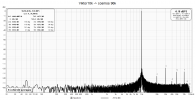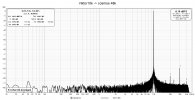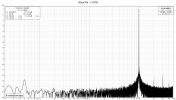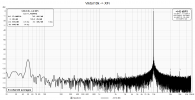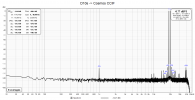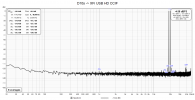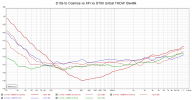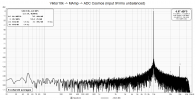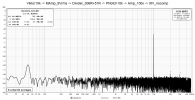Hi Paulvaso80,
Very sorry to hear about your noisy ADC, but it is also reassuring to know that I'm not the only one that has this problem. Your postings have motivated me to join and describe my issues in the hope we can get this fixed.
Hi Ivan.
I have the Cosmos ADC A variant. It worked fine initially, recently the right channel has become noisy.
The right channel led flickers continuously.
It is independent of the inputs being open circuit or short circuit.
It appears to be independent of ADC gain setting.
On power on the REW oscilloscope display show a very noisy signal. REW RTA showing a noise powe of -83dBFS
After an hour this quietens down to a noise spike every half second or so.
The REW RTA spectra in my case is flat, which would correspond to the very short duration of the noise spikes.
The spectra bounces around, increases when a noise spike comes along and decreases at a rate dependent on the averaging applied.
On power on
After 50 mins
I have found a temporary work around. I have made a simple 2W heater with a handful of power resistors which is placed under the ADC. After the ADC warms up the noise spikes disappear and I measure a stable noise power of -127dBFS A in mono mode. In this state the temperature of the top of the case is 28C and the temperature of the bottom of the case, measured with a radiometer after removal from the heater, is around 29C.
What is the issue here and how can this be permanently fixed?

